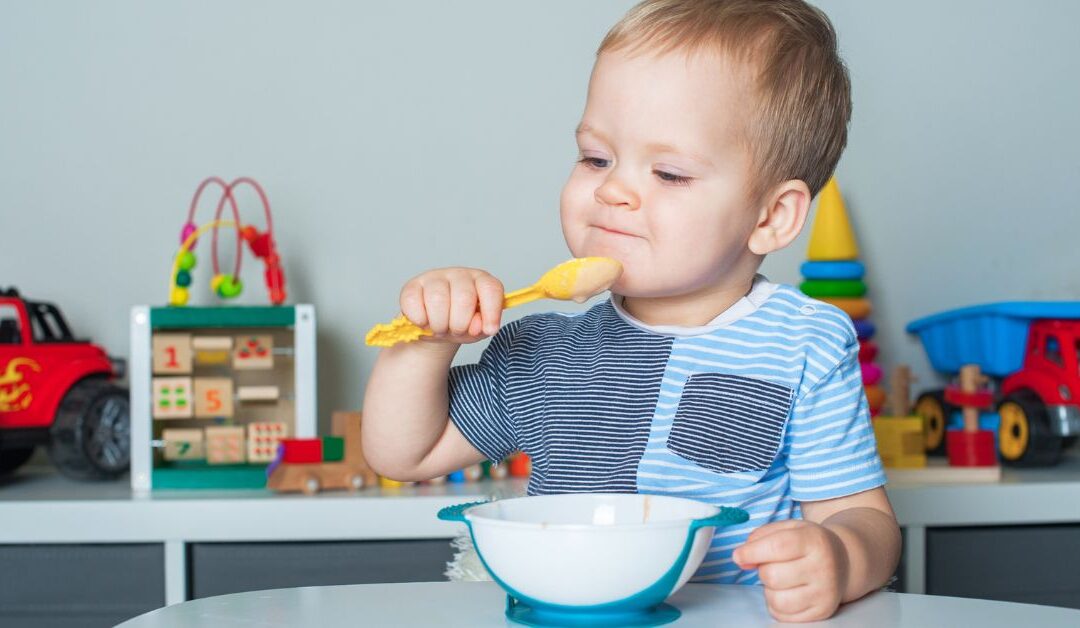Feeding and caring for toddlers often feels like a mix of science, art, and detective work. One day, your child loves mashed carrots—next day, they act like it’s a crime to see them on their plate. Add in teething, picky eating, and sleep regressions, and it’s no wonder so many parents feel overwhelmed.
To cut through the confusion, we’ve gathered insights from pediatric experts and parenting educators to bust common myths and highlight must-have feeding & care essentials for this energetic, ever-changing stage.
Whether you’re dealing with food battles, mess management, or developmental milestones, this Q&A will help you build confidence and simplify your daily routines—without stress or guilt.
Q1: How Often Should Toddlers Eat?
Expert Answer:
Toddlers thrive on structure and predictability. Most do best with three meals and two to three healthy snacks per day, spaced evenly to maintain steady energy and mood.
Unlike infants, toddlers don’t need to eat constantly—but their portions should be small and nutrient-dense.
Pro Tip:
Serve meals at the table whenever possible, even snacks. This builds positive eating habits and teaches social cues.
Parent Takeaway:
Routine feeding times encourage better appetite regulation and reduce grazing—a habit that can interfere with balanced nutrition.
Q2: Is Picky Eating Normal—or a Red Flag?
Myth: “If my toddler refuses food, something must be wrong.”
Fact: Mild picky eating is completely normal!
Between ages one and three, children begin asserting independence, including through food preferences. The key is patience, exposure, and variety—not pressure.
Try offering the same food in different ways: raw, steamed, mixed, or with a favorite dip. It can take 10–15 exposures before a child accepts a new flavor.
Parent Strategy:
Rotate colorful plates and utensils from your feeding & care essentials collection to make mealtime feel like play, not a chore.
Q3: What About Teething and Feeding Challenges?
Expert Answer:
Teething can cause discomfort that affects eating habits—but it’s temporary. Offer soft, easy-to-chew foods like mashed fruits, yogurt, or scrambled eggs.
You can also give your toddler safe, textured items to soothe their gums—like the Baby Rattle Teething Toy. It doubles as both a sensory toy and a teething relief, encouraging motor development while easing soreness.
Parent Tip:
Keep teething toys chilled (not frozen) for a soothing touch. Clean them regularly with mild soap and warm water.
Q4: Should Toddlers Still Use Bottles?
Myth: “It’s fine for toddlers to drink from bottles as long as they’re hydrated.”
Fact: Extended bottle use—especially with milk or juice—can cause tooth decay and delayed oral motor development.
Experts recommend transitioning to sippy cups or straw cups by 12–18 months. These promote stronger oral muscles and better control over swallowing.
Pro Tip:
Choose BPA-free, spill-proof designs from trusted feeding & care essentials brands to make the transition smooth (and less messy).
Q5: What Are the Most Overlooked Care Essentials for Toddlers?
Expert Answer:
Parents often focus on mealtime gear but overlook everyday care essentials that support comfort, hygiene, and routine.
Here’s a quick list of overlooked must-haves:
- Soft bibs and easy-clean placemats for daily feeding.
- Reusable snack containers for on-the-go convenience.
- Wipes and gentle cleansers for after-meal cleanups.
- Comfort toys like the Baby Rattle Teething Toy for soothing transitions.
- Practical storage bins from your furniture & storage range to organize feeding accessories and care items.
Parent Insight:
A tidy, accessible setup encourages independence—toddlers love participating in “grown-up” routines when everything has its place.
Q6: What’s the Truth About “Toddler Formulas” and Supplements?
Myth: “Every toddler needs formula or multivitamins.”
Fact: Most healthy toddlers who eat a varied diet get all the nutrients they need from food.
While toddler formulas can fill occasional gaps, experts emphasize offering balanced meals first. Always consult a pediatrician before adding supplements.
Pro Tip:
Keep meal prep simple but diverse—include a mix of proteins, fruits, veggies, grains, and dairy daily. Use fun divided plates to encourage food exploration.
Q7: How Can Parents Make Feeding Time Less Stressful?
Expert Answer:
Make mealtime about connection, not control. Sit together, talk, and model healthy eating habits. Avoid turning meals into power struggles—your role is to offer nutritious options, and your child’s role is to decide what (and how much) to eat.
Small Changes That Help:
- Maintain a calm environment (turn off screens).
- Use child-sized utensils and chairs for comfort.
- Encourage cleanup after meals—it builds responsibility and routine.
- Keep feeding & care essentials neatly organized so setup and cleanup take minutes, not hours.
Common Mistakes Parents Make—and How to Fix Them
| Mistake | Why It Happens | Simple Fix |
| Overpacking snacks | Fear of hunger | Stick to structured snack times |
| Relying on bottles | Comfort or convenience | Transition to cups early |
| Ignoring mealtime cues | Misreading behavior | Watch for signs of fullness |
| Using screens during meals | Quick distraction | Replace with conversation |
| Skipping self-feeding | Fear of mess | Encourage independence—mess is learning! |
Parent Reminder:
Every messy bite and sticky spoon is a sign your toddler is mastering new skills. Embrace the process—it’s how development happens.
Key Takeaways
- Establish a predictable mealtime routine to support healthy habits.
- Picky eating is normal—exposure and patience are key.
- Use safe, sensory-friendly tools like the Baby Rattle Teething Toy to soothe and stimulate.
- Transition away from bottles to cups for oral health.
- Keep feeding spaces organized and child-friendly for smoother routines.
Feeding and caring for toddlers doesn’t have to be stressful or confusing. With the right mix of routine, practical essentials, and realistic expectations, you can transform mealtime into a fun, educational part of the day.
Explore the full range of Feeding & Care Essentials, Baby & Toddler Toys, and Educational Products at Baby to Kids Store.
If this guide cleared up some myths or gave you new insights, join our newsletter for more expert-backed parenting tips—or share this post with other caregivers learning the toddler ropes.

